Samsung Rolls Out Its First UFS Cards: SSD Performance in Card Form-Factor
by Anton Shilov on July 7, 2016 8:58 AM EST- Posted in
- Storage
- Samsung
- UFS
- Memory Cards
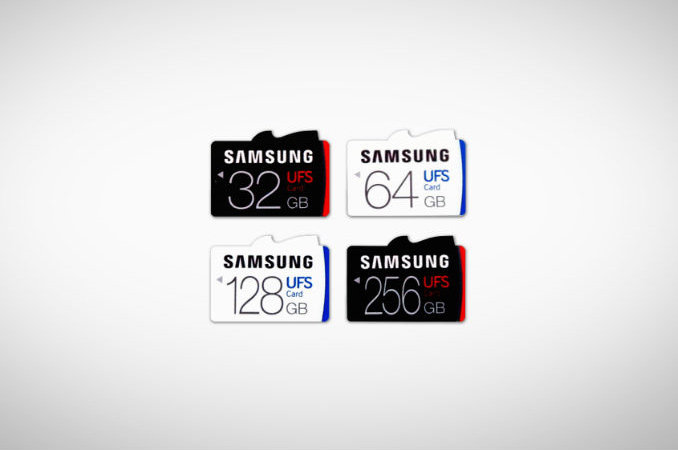
Samsung today introduced the world’s first flash memory cards in UFS form-factor. The cards are compliant with the UFS Card 1.0 specification and offer performance comparable to that of desktop SATA SSDs. It is worth noting that the new cards are not backwards compatible with current microSD devices, which use various versions of SD cards, but they open doors to new levels of removable storage performance as the spec will develop in the coming years.
The new UFS memory cards from Samsung rely on the UFS 1.0 Card Standard (single 5.8 Gbps lanes) published earlier this year. Samsung intends to offer UFS cards with 32, 64, 128 and 256 GB capacities. The top-of-the-range 256 GB UFS card will offer sequential read performance up to 530 MB/s and sequential write performance up to 170 MB/s. As for random performance, then Samsung declares 40,000 read IOPS and 35,000 write IOPS for the 256GB version.
The Universal Flash Storage specification for consumer electronics was published around five years ago and is currently used to connect SoCs to NAND flash storage inside smartphones and other devices. UFS relies on the SCSI transfer architecture as well as on an M-PHY and UniPro electrical interface developed by MIPI Alliance. The SCSI architectural model allows the storage to take advantage of multiple commands with command queuing features, and thus greatly improve random read/write performance for NAND flash storage by supporting simultaneous reading and writing. Meanwhile, the M-PHY interface with 2.9-5.8 Gbps data-rate per lane gives a significant increase in bandwidth for NAND devices. The boosted performance typically helps speed up loading of applications, or capturing images or videos in higher resolution (and/or with enhanced bit-rate). UFS-compliant memory cards bring the advantages of SCSI and M-PHY to removable storage in card form-factor.
Samsung positions its UFS memory cards for a variety of future compatible devices, such as DSLRs, 3D VR cameras, drones, mobile devices and other electronics, which benefit from high-performance removable storage. At present, none of such devices are commercially available, but with new cards approaching, it is logical to expect makers of devices to catch up.
The world’s first UFS memory cards have passed Universal Flash Storage Association (UFSA)’s certification program, which assesses electrical and functional specifications. As a result, Samsung will be able to start selling its UFSA-certified UFS cards as soon as the first devices with appropriate card readers launch.
Other makers of NAND flash memory and products based on it, such as Micron, SK Hynix, Toshiba and Western Digital (SanDisk), will also likely launch their UFS memory cards in the coming months and quarters.
Since the UFS standard is developing (currently consumer electronics use UFS 2.0 spec for non-removable storage) and is expected to advance to versions 3.0 and 4.0 in the coming years. It is expected that the removable UFS card line will also improve to the newer standards over time.
Samsung did not touch upon pricing or availability of the upcoming UFS memory cards.
Source: Samsung


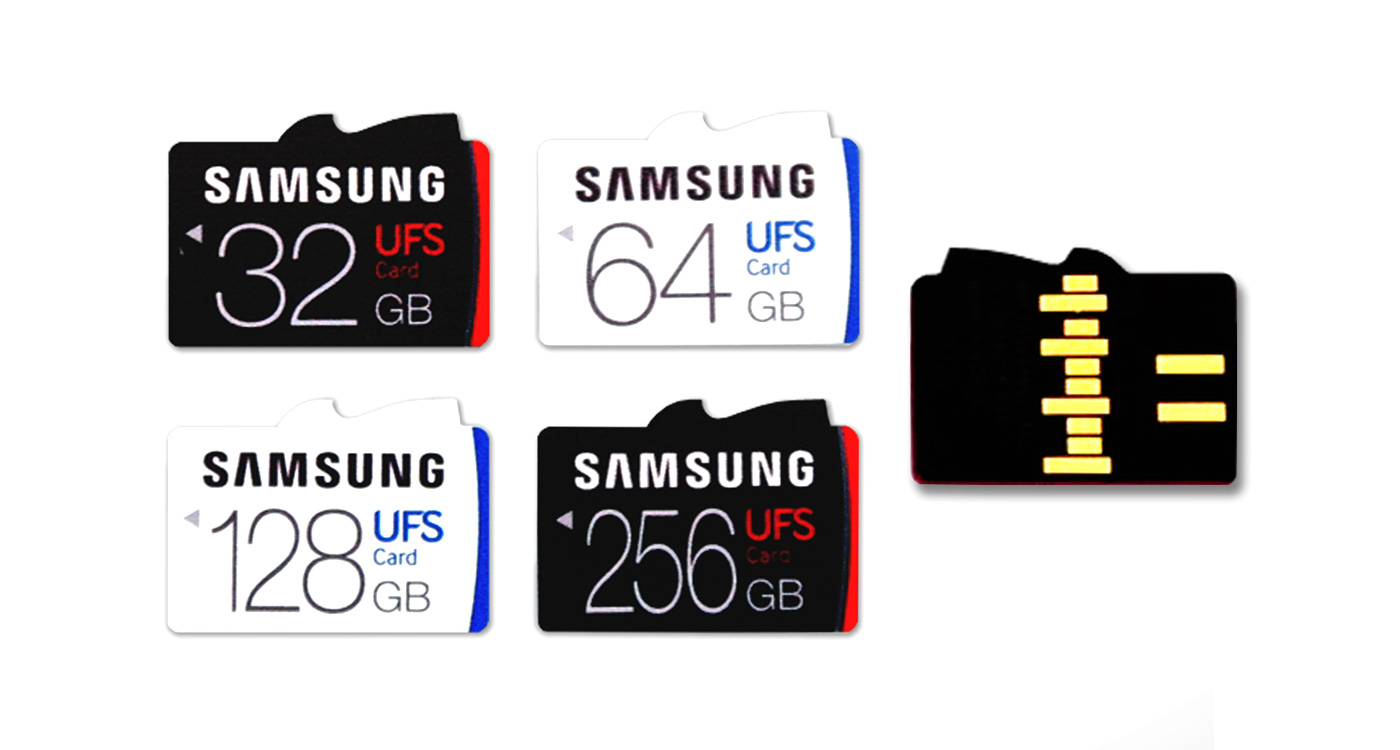
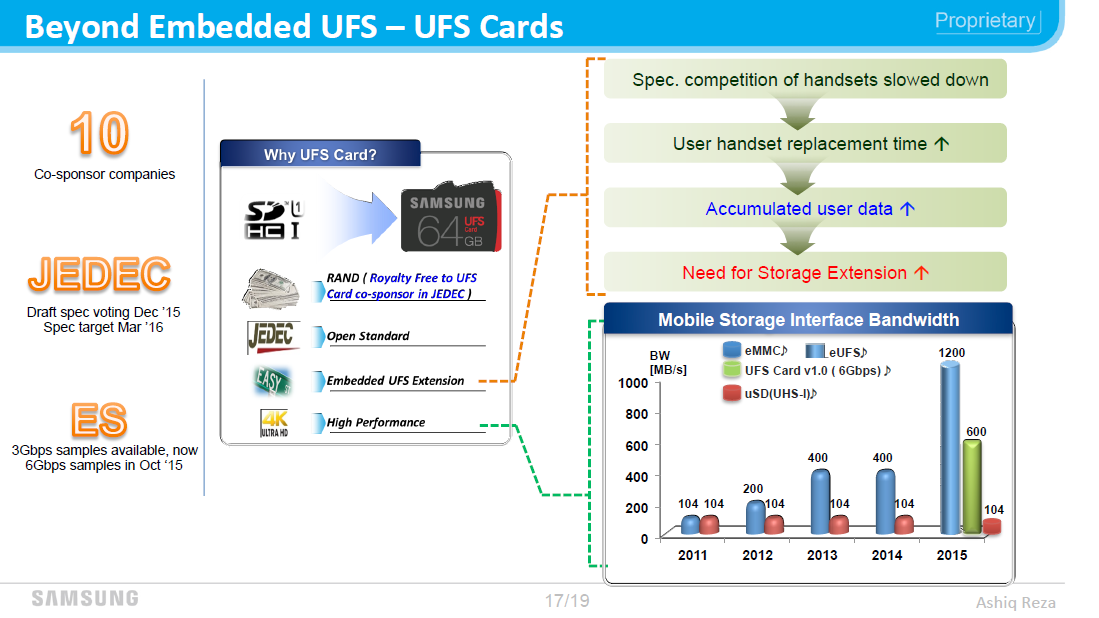
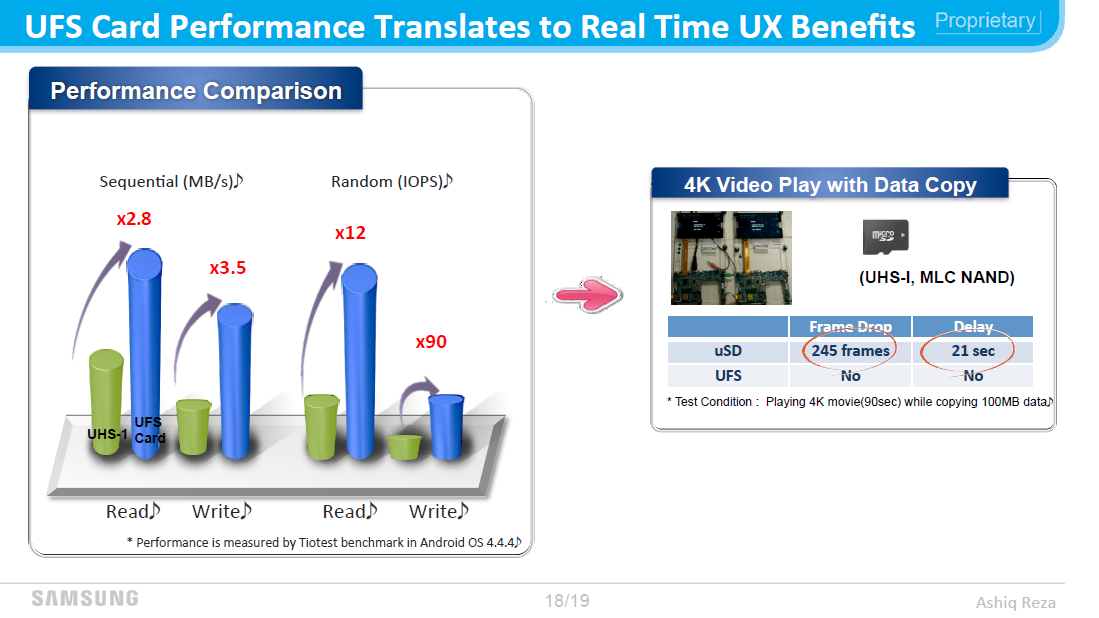
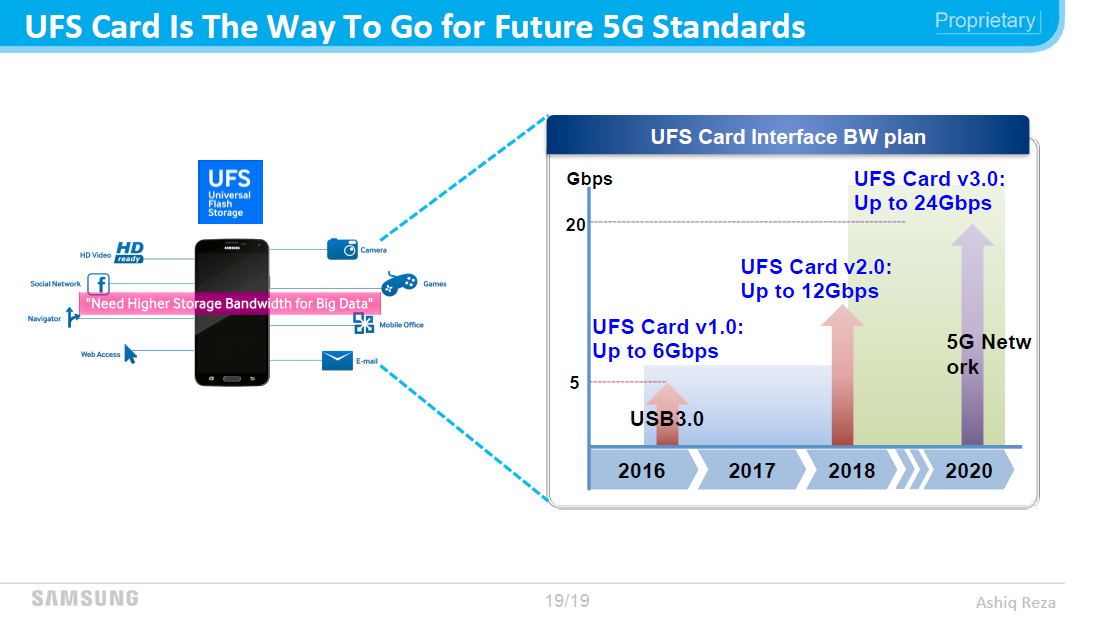








38 Comments
View All Comments
danielfranklin - Friday, July 8, 2016 - link
Its not actually full of new technology, it won't take 10 years like SSDs because it is an SSD.Add a new interface, firmware and make the chips small and you are set. It will cost a bit but they aren't reinventing NAND flash.
They will still be a slow uptake but if you look at the physical design it's safe to say devices will start supporting UFS and MICROSD, the user will then decide how much to spend based on their requirements. SD will have their place but I can see UFS on high end phones and cameras, laptops and tablets for example being quite popular with power users.
Personally I can't wait.
theduckofdeath - Friday, July 15, 2016 - link
^^^^fazalmajid - Saturday, July 9, 2016 - link
I would expect the card storage of the future to be based on NVMe (as with recent iPhones' internal storage), not SCSI, so at best this would only be an interim format.Lolimaster - Sunday, July 10, 2016 - link
NVMe looks nice on benchmarks but for user side offers pretty much nothing over sata/ahci.Even on high end SSD's you only get more sequential speeds but 4k random and access times (what users can actually feel unless you work with tons of data) remains unchanged.
zogus - Monday, July 11, 2016 - link
Sequential write speed is not just a "nice benchmark."As a DSLR owner, it is by far the most important metric for me, since that's the metric that dictates how many consecutive shots I can take before the camera's buffer is filled up. A distant second is sequential read, as that would speed up the process of transferring the photos to my computer. Random read/write are totally irrelevant for me. I believe I speak for almost all photographers and videographers on this.
JonnyDough - Sunday, July 10, 2016 - link
Excellent. Now Verizon can make more money when they fill up that card more quickly with extra crapware I won't use.Pissedoffyouth - Friday, July 15, 2016 - link
uhhhh what? They don't fill current MicroSD's with crap, why would they do that with this?fnydztjkejyv - Monday, August 24, 2020 - link
http://bitly.com/zoom-viber-skype-psy